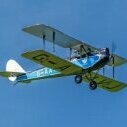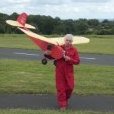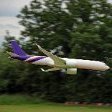All Activity
- Past hour
-

Galaxy Models Mystic or Phoenix for a Laser 155.
cymaz replied to David Davis's topic in Sport, Aerobatic and 3D kits
I had one of THESE many years ago and built a hatch on the underside of the fuselage after completion.Hardly noticeable and very useful. -

Galaxy/Pegasus Hurricane
Paul De Tourtoulon replied to GrumpyGnome's topic in All Things Model Flying
Good morning Martin, have you a lien for your videos for Youtube, my snails internet connection won't charge them, while the first one was charging, I cleaned the wood fire built it up and lit it, made myself a coffee and drank it, and all I charged was the first 10 seconds, it's like a lot of the 'heavy' photos ( I won't name and shame them 🤢) I just can't load them.😡 -

Galaxy Models Mystic or Phoenix for a Laser 155.
David Davis replied to David Davis's topic in Sport, Aerobatic and 3D kits
I've got some in stock. I'll use one. -
Galaxy Models Mystic or Phoenix for a Laser 155.
GrumpyGnome replied to David Davis's topic in Sport, Aerobatic and 3D kits
Carbon rod/tube makes a nice light, stiff, strong pushrod.... -

Galaxy Models Mystic or Phoenix for a Laser 155.
David Davis replied to David Davis's topic in Sport, Aerobatic and 3D kits
Of course. I built the model I can chop it up again! Besides, having removed the two servos from the rear fuselage I now have two holes which will give me access to the rear fuselage. Having removed the two servos and the rx battery, the c of g was much better, in fact I'd be quite prepared to fly the model with the c of g in this position. I thought of having one servo under the wing and the other at the rear but as soon as I put one of the servos back into place we went back to a rearward c of g. So I will mount all three servos side by side then use the rx battery to fine-tune the balance point. -
I think it quite likely that inexperienced beginners literally do not have the first clue of what constitutes a windy day. At my old club you would often find several beginners waiting to fly, on completely unsuitable days when they would have been better off staying in the shed, where the more experienced flyers were on such a morning, As they grew more experienced, they were able to more accurately gauge the weather, to learn which were the wind speeds and directions which would give less enjoyable flying. They might also progress from battered trainers to better models, where the consequences of heavy arrivals, compounded by unfavourable wind conditions, turbulence and crosswinds were more extreme than breaking a few wing bands as their Hi Boy cartwheeled down the strip. There are models which are my go-to models for windy days and they include foamies as well as certain balsa builds -such as the Wot-4 , but also my Mini Flying Machine- and the key to having the more enjoyable flights in the wind is power to weight, to be able to punch through the wind, rather than having an overly heavy models that is supposed to not get buffeted by the wind. As mentioned above, the technology onboard the wee 400mm Volantex models is such that a stable flight is pretty much guaranteed in a moderate windspeed - say 10-15mph without any concern about crosswind landing, since you can drop them at your feet under power. Until you've flown, or seen, these remarkable wee models operating in windy conditions you possibly wouldn't believe how well they do.
- Today
-
An interesting experiment and a nice video illustrating the effectiveness of flaps increasing a wing’s camber so enabling the ‘same lift’ but at a lower speed whilst increasing drag producing a steeper glide angle. The ailerons or any control surface will be ‘weak’ at slow airspeeds, it is the first feedback we model pilots have that we are flying slowly, maybe too slowly. What we observe is always ground speed but what we (and the model) are interested in is airspeed. The second indication we are flying too slowly is the incipient spin!
-
I had a similar experience the other day. I had flown my Giant Revolver and fuelled it up fir a second flight but when I checked the controls both elevators appeared to be ‘lazy’ in other words there was a delay between a Tx stick input and the servos operating, not all the time but more so if I moved the stick quickly back and forth. Note that there is 1 servo for each elevator half and both exhibited the same issue. I changed the Rx batteries but still had the same problem I also swapped Tx to no avail. Back home I swapped the Rx for a different one, same problem then removed the servos and used a servo tester which showed both servos were toast! Quite why they both went at the same time is a mystery as no others were affected! BTW they were New Power servos which had been in the model since I first assembled it 8 years ago.
-
Is model flying in ‘windy’ weather a phenomenon brought on by modern electric foam models? When I first got into model RC aircraft in the late 1980s, you typically started with a 40 sized two stroke powered trainer that had a 60” wingspan. It would be typically built from a kit using balsa and ply for the fuselage, fin and tailplane and veneered foam wings which were joined with an epoxy soaked fibreglass bandage. On top of the 40 stroke metal lump up front, it had a fuel tank and full sized servos, receiver and RX battery. The result was that we started with a trainer that was heavier and more powerful than the foamies that we fly today. And the follow on aircraft would be similar build, either with smaller wingspan or you would go up to a 60 engine. I remember that it had to be pretty windy before I would think “it’s windy” and consider not flying. By comparison I find that much slighter winds these days has the guys at the club claiming “it’s a bit windy”. I think the reason is that heavier, bigger, more power aircraft are less likely to be pushed around or buffeted by the wind. Some with helicopters by the way, fly a 450 and it is squirrely, gets pushed around and impacted by even the slightest changes in wind than compared with a 600. So maybe, the answer is, if we want an RC aircraft that are more suitable for windy weather then you should go back to glow powered traditional builds. For example if you want an intermediate aircraft, how about building a Wot 4 classic kit and sticking a 55 two stroke on the front. If you don’t fancy building then similar second hand models can often be seen on the BMFA Classified at very low prices.
-
I think you were a little unlucky with the 'arrival' in the wind. It looks like the wind, and maybe a little PIO while distracted slightly by the engine cut was the likely cause. As i have already mentioned, I had a situation with my little hurricane where the wind lifted it slightly and then slammed it into the runway. There was nothing i could do about it, but as with yours damage was minor. Looking at the video thought your rates seem really high across the board. I would have to reset all of my rates to get the roll rate and elevator response your model demonstrates. I have not measured the travel on mine, but its really low.
-

Galaxy Models Mystic or Phoenix for a Laser 155.
cymaz replied to David Davis's topic in Sport, Aerobatic and 3D kits
Balsa dowl would be easier to fit but unless supported in a couple of places will rattle like a spoon in a bucket. Even worse for a snake. Are you able to open up the bottom of the fuselage to do the necessary works ? -
sextorso joined the community
-
One of which? As I say, my FW190 flies beautifully, but both Trainstars have challenged seasoned fliers even in Intermediate mode.... The key fact here from this text is that an experienced flier performed the initial launch and climb-out, handing over control at height...... and in a decent location in the sky I guess
-
Forum members' new models: Let's see them.
GrumpyGnome replied to Paul Marsh's topic in All Things Model Flying
Very nice! -

Galaxy Models Mystic or Phoenix for a Laser 155.
David Davis replied to David Davis's topic in Sport, Aerobatic and 3D kits
Good Morning Gentlemen! Having borrowed the club's c of g apparatus and set the pivots to 4 inches (10 cms) from the leading edge as recommended in the instructions, I put the model in place and as we suspected it was very tail heavy even with the rx battery taped much further forward than one could realistically fit it. I am in the habit of keeping various bits and pieces of my latest build in a tin which once contained Twining's tea. The weight of this tin and it's contents amount to nearly 12 ozs (340 grammes.) With the tin placed on the nose it brings the c of g to an acceptable position. The most obvious next step is to move the two servos from the rear fuselage and to reposition them next to the throttle servo. I will use a closed loop system on the rudder but I'm not sure how to actuate the elevator. I'm considering either snakes or a balsa dowel. Whichever I chose, I'll have to send off for them. -
gdfse joined the community
-
Coninno joined the community
-
Oddly enough I have just completed the same. Middle Phase + Powerfun 70mm EDF. Flew it a few times and sold it on. I am now looking at the TOP RC Swift, which is a similar design, but carbon reinforced thin wing etc. 100mph +!
-
Galaxy/Pegasus Hurricane
Martin Harris - Moderator replied to GrumpyGnome's topic in All Things Model Flying
A slightly more successful landing from the -4 oz. flight a couple of days earlier...still exhibiting nose happy behaviour though. Landing.mp4 - Yesterday
-
Galaxy/Pegasus Hurricane
Martin Harris - Moderator replied to GrumpyGnome's topic in All Things Model Flying
At the risk of revealing my ineptitude, here's a video of the recent test flight which ended in a minor disaster (all repaired now) which took me rather by surprise. Looking at the video suggests the engine may have been a touch rich on the low end which may have caused the cut at the critical moment. Hopefully, the more successful parts may give Ian some confidence for his version's forthcoming maiden! Untitled video - Made with Clipchamp.mp4 -
I entirely agree that light wing loading planes have better "manners" on landing but I was interested in how flaps might perform on such a plane. My most extreme experiment was this which I call the "Push Pull" with 2 section flaps. They are on a Tx knob so are variable from 0 to 90 degrees. A basically very stable design with inline counter rotating props to virtually eliminate motor torque. The advantage of such a layout is that a big speed reduction is possible without requiring a nose high attitude so the wing tips do not stall although the ailerons are "weak" at slow speed and thus need big inputs. This video shows how it flies with no flap and full flap. https://www.youtube.com/watch?v=2TNp_G2NQ00&t=1s
-

Forum members' new models: Let's see them.
Nick Cripps replied to Paul Marsh's topic in All Things Model Flying
Finally managed to maiden my Sea Stormer, a David Boddington plan from Aviation Modeller International circa 1993. Here it is at the picturesque Loch Earn where I'm spending the weekend enjoying a waterplane event. 69" wingspan, OS91FS, lovely flyer, as you'd expect from a DB design. -
It is not that you can't drive even a glider type with an EDF but a glider is not optimised for high speed flight whereas an EDF is. In addition an EDF is fixed in the airstream whereas a prop can fold to reduce drag. It comes down to a personal choice. I note the MaxThrust Aggressor is recommended for experienced pilots. Compared to the Aggressor Sport with a folding prop it uses a different wing and a 4s rather than a 3s LiPo.
-
Nice one that sounds really cool,these planes are so cheap but they seem really decent from all the vids I've watched etc.
-
Yeah the high wing ones seem very good and a decent start for sure.
-

Windy weather,my first plane??
Glenn Philbrick replied to GreyAce's topic in All Things Model Flying
Oddly enough a young lad turned up at our field with one of these. He has never flown before so I had the first flight, in intermediate it coped with the wind reasonably well, in expert it is a nightmare due to the wind. The lad had a couple of flights with it once at a decent altitude and it servived him getting it back in the ground as it is so light that a hard arrival does not damage it. I could see in a calm day it would fly quite well.










